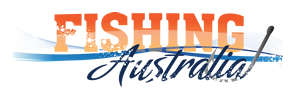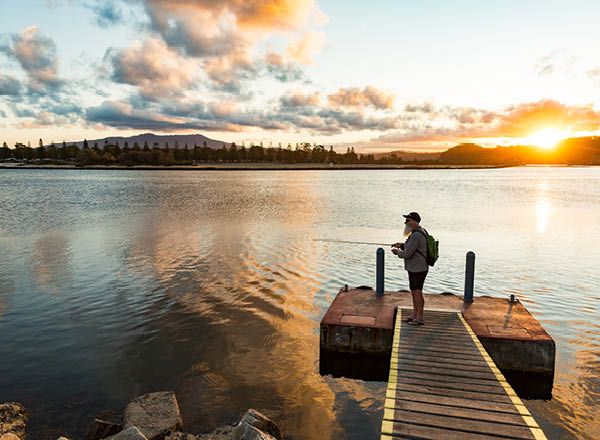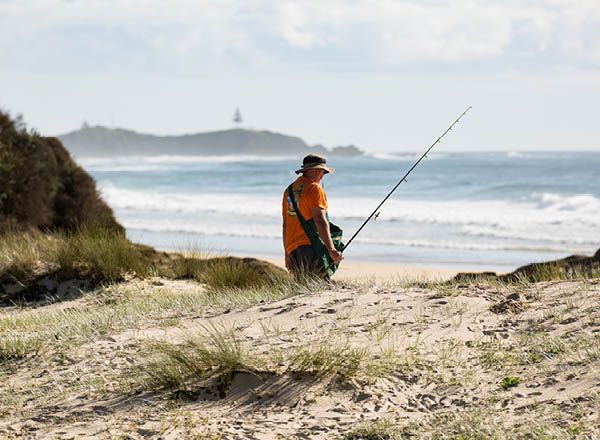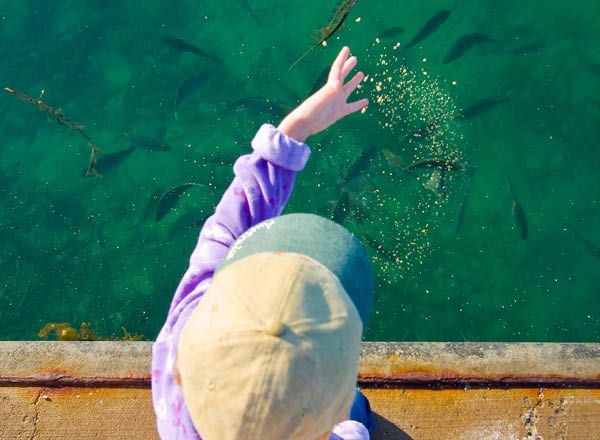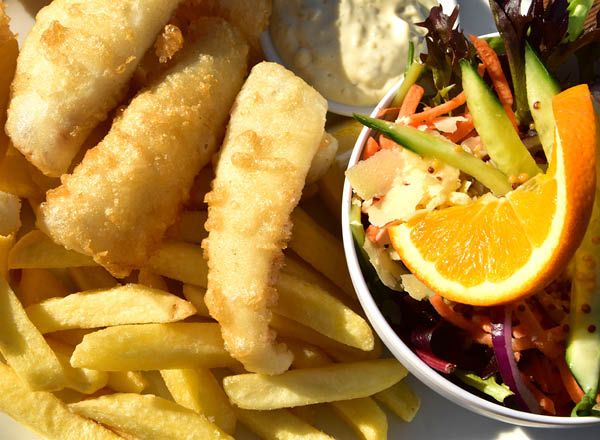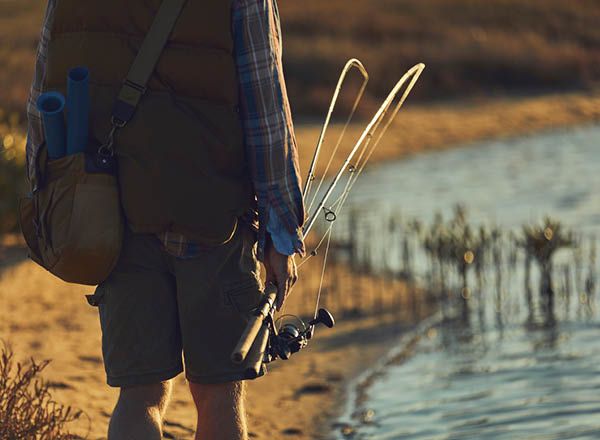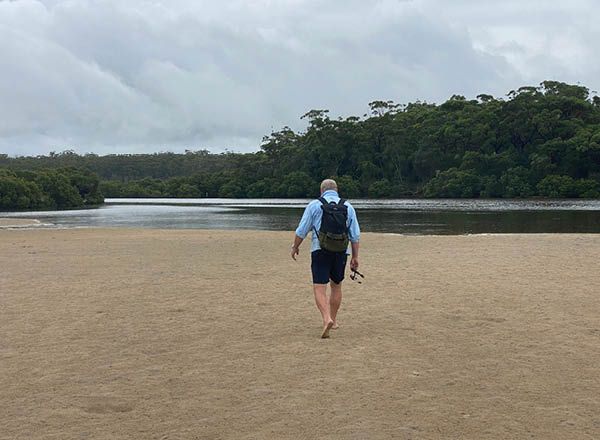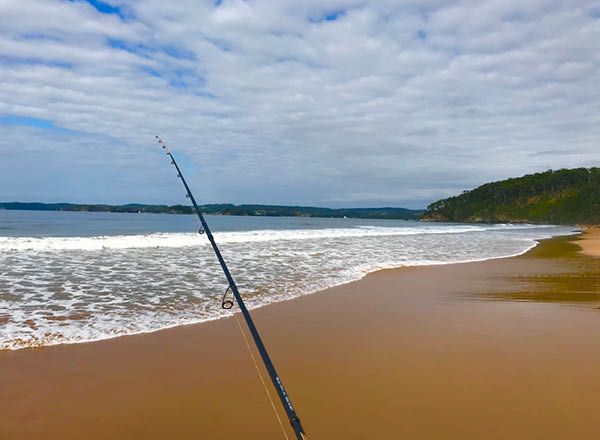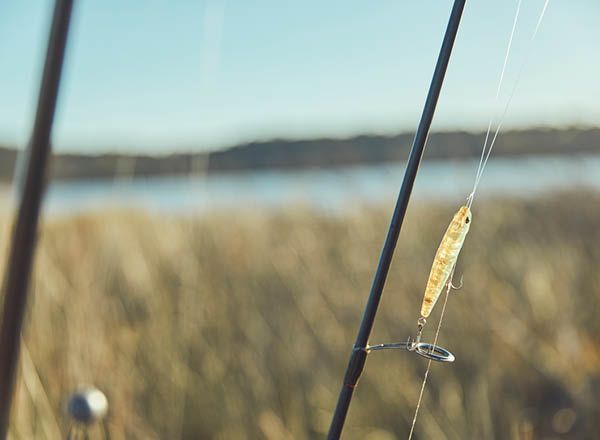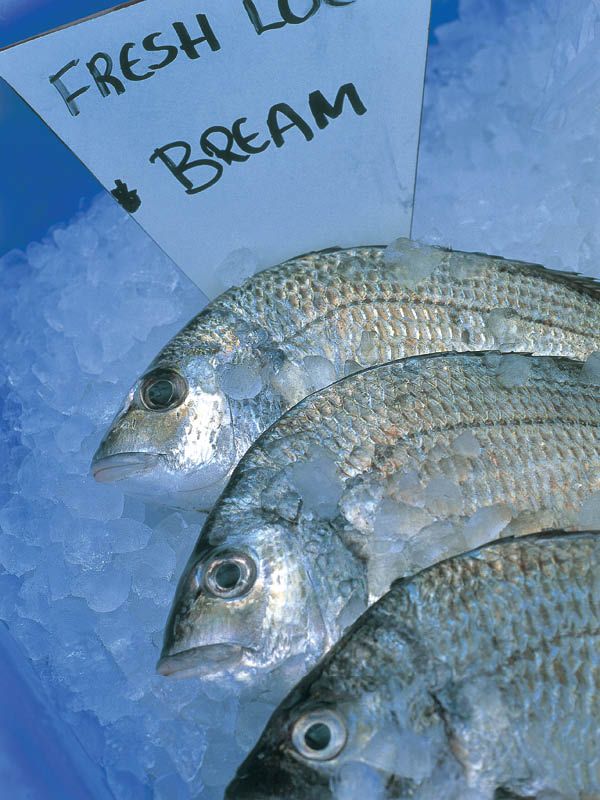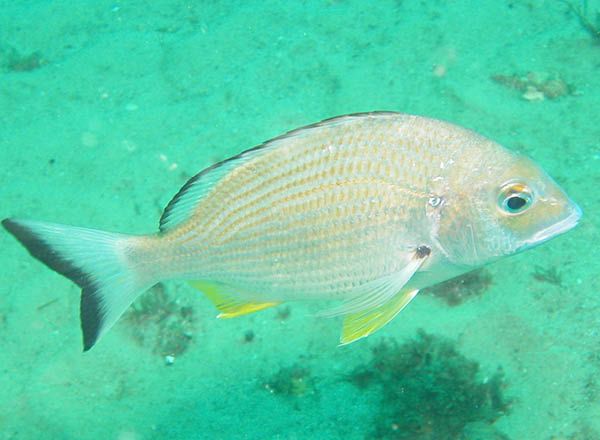Destinations
Eurobodalla Shire Sthn NSW
Thursday, 6 February 2025
Summer Fishing in Eurobodalla with Rob Paxevanos
Pick Your Target
Ahh Eurobodalla, land of many waters and indeed the land of many fish. There are SO MANY fish species and beautiful spots, you can spend a lifetime exploring and it breaks my heart to say that’s exactly what my friends and I do ��
But let’s say you’re new or even just half way through the delightful journey of fishing, what is the path to becoming a proficient angler in this paradise?
Well, I’m here to help! If there’s anything you don’t understand or need to know more about, I have a list of material and local contacts at the end that will get you sorted. My friends and I just love seeing people out enjoying fishing and particularly those big smiles when it all comes together with a nice catch.
To kick things off , the best way to learn fishing is to pick a target species and learn all about it. You will catch other good fish along the way. I’ll use bream as the first example.
Bream Off The Bank
Bream are the most reliable fish to target in Eurobodalla. They fight well, taste great, and they love hanging around the shoreline so no boat is required!
When: Summer is a great time to target bream as they are spread throughout Eurobodalla’s waterways. The biggest ones do congregate around the rocky headlands in winter when they spawn, more on that in our Winter guide (watch this space). But in Summer you can pick the location to suit you.
Where: You can find bream just about anywhere they have food. They are hunters that chase baitfish, crabs and prawns and anything they can catch and crush with their purpose designed mouths. Like us though, bream have a keen sense of smell and will happily sniff their way over to a nice fresh easy-to-catch bait you have offered them.
In particular, bream love structure. This can include natural structures like rocks running into the sand, reefs, weed beds, pronounced holes, etc. It can also include man-made structures like jetties, bridges, boat ramps, pylons etc. All these areas harbor the food bream like to hunt.
Some of these spots also have an extra supply food that us humans provide when we spend time by the water, like fish scraps, unwanted chips, etc. You see bream are also scavengers and love a free feed.
Popular estuaries for bream include Durras Lake, The Clyde River at Batemans Bay and Nelligen, Moruya River and Wagonga Inlet at Narooma. But the small lakes such as Kianga at Dalmeny, Coila Lake near Tuross Head, and most other systems/lakes, big or small, hold bream.
Beach wise any beach from the ones in Murramarang National Park, to those at Surfside, Surf Beach, Lilli Pilli, Malua Bay Tomakin, Broulee, Kianga, Narooma, Mystery Bay and more all have good bream fishing.
But what about the how?
The best way to catch bream is on a running sinker rig. There’s places to get help with this, detailed later. In brief, run your main line, roughly between 6 and 12 pound, through a one ounce ball sinker, with a one-metre 8 pound leader, for a standard rig.
At the end you need a 3/0 circle hook. These hooks work by letting the smaller fish pick at the bait and the bigger ones take the whole thing. As they move off, the hook pulls back into the corner of their mouth. Effective and also handy because mouth hooked fish are easy to release when needed.
The key to a circle hook is that you don’t strike at the bites or the hook will pull out of the fishes mouth while it is facing you. All you have to do is watch until the line moves off and the fish hooks itself. It’s a very relaxing and productive form of fishing.
Bait selection
Bait wise, bream are not fussy. Use pilchard, whitebait, squid, prawns, even leftover food from the house, like chicken and beef. They will eat ANY flesh/protein. The best baits though, are both tough and juicy. They draw in more bream more quickly and will withstand the little pickers longer.
My favourite bait is a thumb sized strip of tuna or other oily fish like slimy mackerel, yakka, etc. All are readily available from any bait outlet along the coast.
The real trick now is to cast near the structure but not actually in it or you will get snagged. Jetties are a great place to start. Look for a sandy patch amongst the weed/rocks and cast there.
The township jetties at Batemans Bay are a good example for this. Let your sinker sit on the bottom. Resist the urge to move it, as dragging it across the bottom will find you a snag. Let the current waft the scent downstream and the bream will sniff out your bait and eat it.
Tides and Currents
Current/Tide is a big thing to learn about, especially in places where it can roar such as in the Cylde River and entrance rock walls at Moruya and Narooma. If you are on a jetty, cast directly downstream and your sinker will sit still. If you cast across the current the belly formed in your line will drag the sinker along, which is fine if it is a clean sand or gravel sea bed, but otherwise you will get a lot of snags. A heavier sinker can be used to anchor the bait if the current is strong. It is all about working out how to fish a spot you like… or even better, moving to a spot you might like more.
If the current in the main rivers and rock walls are proving a little too strong, the trick is to fish the tide changes. At this time, the water stops moving fast for around 45 minutes. Bream, wherever you find them, LOVE a tide change. Every fish and their prey has to change direction to face the current, so it’s the prime time to fish.
Beach Headlands
If you’re looking for a little solitude there’s many a stunning beach to fish. The bream LOVE the corners where the rocks meet the sand. Again, land your sinker in the sand and it’s happy days. The surf beaches require a little more experience to manage the current, weed and waves. If you’re ready for it, apply the same rigs, baits, tides and enjoy. Even easier though, are the calmer, more sheltered beaches inside the bays or inlets. Basically, any headland running into the beach is a prime spot for bream and Eurobodalla is blessed with this habitat.
Regardless of the spot, you will likely find little pickers tapping at your bait, especially in summer. Let 'em go at it. The bigger fish will move them aside when they are ready. If the pickers stop, you need to rebait.
If you do find the pickers and you’ve got kids in tow, they will LOVE catching these smaller fish. Simply downsize the hook to a size 4 and use a smaller bit of bait and let the kiddos have some fun. They will likely catch you some fresh baitfish to use like a slimy mackerel, yakka, mullet etc.
Lakes and Inlets
The other spots to explore are the many lakes and inlets that have little or no current. Good examples include Durras Lake, Colia Lake, Tuross Lake and the inner reaches of Wagonga inlet at Narooma. Same rigs and techniques as above. If the wind is slight in these spots you can go for an unweighted bait which is simply a hood on the end of the line – it will waft down to the lake-bed ready to do its thing. In these spots I like to use a little burley. Any bait or food item works, just avoid imported prawns, they can transmit disease to our local prawns and crabs and cause big irreversible problems.
Using just a little is often the key to burley. Tease 'em, but don’t give them the main course, your bait.
What's On the menu?
The Fishes Dinner Time
Prime time to fish in summer is early and late in the day when the light levels and heat drops off. It’s the perfect time for predatory fish like bream to come out and feed more freely.
It also means you’re not cooking in the sun. Take a swim and have a look around when it’s hot and sharpen your hooks for when the sun is low.
Combine dawn and dusk with a tide change and you will be in pole position.
Your Dinner Time
Gutted, gilled, scaled and grilled whole with a bit of salt and lemon, bream is first class tucker. Cooking them whole allows you to peel the flesh from the bones and eat the whole fish with no waste! They are also great on the BBQ whole or steamed whole in Asian style dishes. YUM!
Bonus Fish
Using the above techniques, you will also catch many of the other prized species in Eurobodalla. Namely flathead, tailor, trevally, and, if you’re lucky, even a jewfish (mulloway). More on those species in the Autumn, Winter and spring guides.
Know the rules
Size and Bag Limits
One thing you will have to do is take a rule book with you. Tackle stores provide these. OR save this link to your phone.
It is best to memorize the size and bag limits of the common fish discussed above BEFORE you go out. That way if you catch an undersized or oversized fish you can get it back quickly. If you can’t get a fish off quickly, keep it in the water until you can so it can breathe and stays wet. This ensures a high chance of the fish surviving.
If you catch something you are unsure of, apply the rule: if in doubt let it back out. This helps look after species you might not realize are protected.
Some fish also have a maximum size limit. These are the big breeders and they've gotta go back!
The best table size for bream is from legal size up to about 36 cm. Over 40cm are much older fish. Now that I’ve got you on the path to becoming a fishing weapon, please think about letting the bigger breeders go even if you are legally allowed to keep them. This is an ethos carried out by many locals and if they see or hear you do this, they will know your heart and brain is in the right place and will share many more special fishing secrets with you.
Need More Help?
My daughter Hailey has written two books to help families. The first of these books was written for and launched in Batemans Bay: Kids Fishing. It helps families learn how to tie knots, catch bait, cast, etc. It is our family’s bestseller. Just search “Kids Fishing Book” on Ebay if you want a copy.
For more specific advice on rigs, exact local spots, baits, times and tides, drop into the local tackle store. They love helping out.
Looking forward to the Autumn Column, meanwhile enjoy putting the above into practice in the Stunning Eurobodalla.
See you on the water.
Rob Paxevanos
Check Rob's Social channels for more
Check out these Eurobodalla specific episodes and clips you on our social channels:
www.youtube.com/FishingAustraliaWin
www.facebook.com/fishingaustraliatv
https://www.tiktok.com/fishingaustralia
Images in this article are courtesy of Rob Paxevanos, Destination NSW, and Eurobodalla Coast Tourism.
